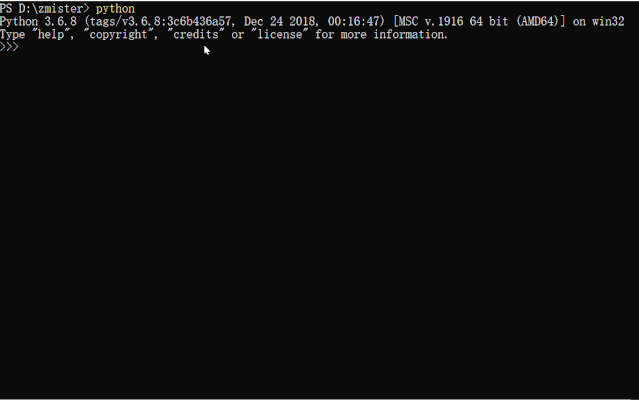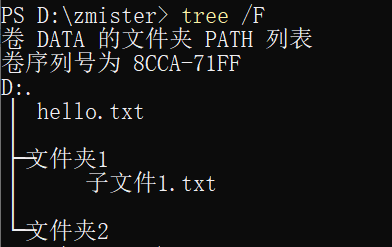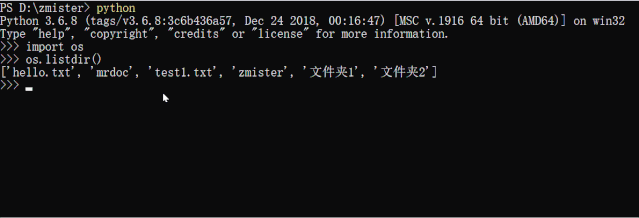A practical guide to Python file handling
The operation of files is a basic and important knowledge point in Python. Whether it is crawling, data analysis, web development, or writing graphical interfaces, or data analysis, file-related operations may be required.
Today, I will study and review in summary, Python various file processing.
One, open() mode
open() function
The open (file name, operation mode) function is used to open a file with a given file name in a specified mode.
Basic mode of file operation
| Column name | column name |
|---|---|
| w | Write mode: the content of the file will be erased and rewritten |
| r | Read mode: only read the content of the file |
| a | Append mode: append content at the end of the file content |
Example demonstration
Use w mode to write file content

Use r mode to read file content

Use a mode to append file content

Second, get the directory list
Basic directory list get function
Via os module
os.listdir(directory name): It accepts a directory name as a parameter and returns a list containing all file names and subdirectory names in the directory;os.scandir(directory name): Its behavior is similar tolistdir(), but it returns an iterator of file objects instead of a string.
Via pathlib module
pathlib.Path.iterdir(): It works on apathobject and returns an iterator object similar toscandir().
Example demonstration
The folder structure is as follows:

**Use os.listdir() to get **

**Use os.scandir() to get **

**Use pathlib to get **

Three, get file attributes
There are a wealth of functions and methods in Python to obtain file information.
Via os module
os.stat (path string), given a file or folder path as a parameter, return astat_resultobject;os.scandir(directory name), this method we introduced above, it returns an iterable object, we traverse this iterable object, each traversed object has astat()method, its return value is the same asos.stat()is the same.
Via pathlib module
pathlib.Path.iterdir(), each object in its return value has astat()method, which is the same asos.scandir().
Example demonstration
Use os.stat()

The returned stat_result() object contains the following common information:
-
st_mode, file mode: including file type and file mode bits (ie permission bits). -
st_ino, related to the platform, but if it is not zero, the file is uniquely identified according to the value of st_dev. usually: -
On Unix, this value represents the inode number.
-
On Windows, this value represents the file index number.
-
st_dev, the identifier of the device where the file is located. -
st_nlink, the number of hard links. -
st_ui, the user ID of the file owner. -
st_gid, the user group ID of the file owner. -
st_size, the file size (in bytes), the file can be a regular file or a symbolic link. The size of a symbolic link is the length of the path it contains, excluding the null byte at the end. -
st_atime, the most recent access time, in seconds. -
st_mtime, the most recent modification time, in seconds. -
st_ctime, depending on the platform: -
Indicates the time of the most recent metadata change on Unix,
-
On Windows, it means the creation time, in seconds.
Use os.scandir()

Fourth, create a directory
You can still use the os module and the pathlib module to create a directory.
Via os module
os.mkdir (directory name), create a single directory through the given directory name;os.makedirs (directory path), create a complete directory tree;
Via pathlib module
pathlib.Path.mkdir(), create a directory from the givenPathobject;
Example demonstration

Five, delete files and directories
Delete Files
Via os module
os.remove(file path), delete a single file, if the file does not exist, throw aFileNotFoundexception, if the path is a directory, throw an ʻIsADirectoryError` exception;os.unlink(file path), same asos.remove();
Via pathlib module
pathlib.Path.unlink(), delete thePath()object file.
Delete directory
Delete a single directory
os.rmdir (directory path), delete a specified directory path, if the directory is not empty, anOSErrorexception will be thrown;pathlib.Path.rmdir(), delete the path object.
Delete directory tree
shutil.rmtree (directory path), delete a complete directory tree;
Example demonstration
Delete Files

Delete directory

Six, file name pattern matching
Sometimes it is necessary to perform fuzzy query on file name pattern matching (including regular), and it is necessary to use functions and methods related to file name pattern matching.
. startswith()andendswith()methods, both of which operate on strings, and can be used when processing file names;fnmatch.fnmatch(file name, matching pattern), check whether the filename string matches the pattern string, and return True or False.glob.glob (matching pattern), returns a list of possible empty pathnames matching pathname, the elements of which must be strings containing path information.pathlib.Path.glob (matching pattern), similar toglob, but based on thePathobject.
Example demonstration
String processing

Use fnmatch

Seven, traverse the directory tree and process files
os.walk (directory path, topdown=True), to generate file names in the directory tree by browsing the directory tree in the order of up->down or down->up. For each directory in the directory tree rooted at top (including top itself), it will generate a triple (directory path, directory name list, file name list).
Example demonstration

8. Temporary files and directories
tempfile.TemporaryFile (mode)to create and open a temporary file in the specified mode;tempfile.TemporaryDirectory(), create a temporary directory and return it;
Example demonstration

Nine, copy, move and rename files
Copy
shutil.copy(source, target), copy the source file to the target, if the target is a directory, use the same file name as the source;shutil.copytree (source directory, target directory), copy the entire directory tree starting from the source directory to the target directory and return to the target directory.
Move and rename
shutil.move(source, target), move a file or directory from source to target;os.rename (current name, new name), rename a file or directory;
Ten. Archiving and Compression
zipfile.Zipfile (compressed package name, mode)to open a compressed package in the specified mode;zipfile.Zipfile().extract(file name), extract the given file from the zip file;shutil.make_archive (base file name, format name, root path), compress and pack a folder as a compressed package from the given parameters;shutil.unpack_archive (compressed package file name, extracted directory), decompress a compressed package to the specified directory;
Example demonstration

11. Read multiple files
fileinput.input([file name list]), read each file from the given file name list;
Recommended Posts